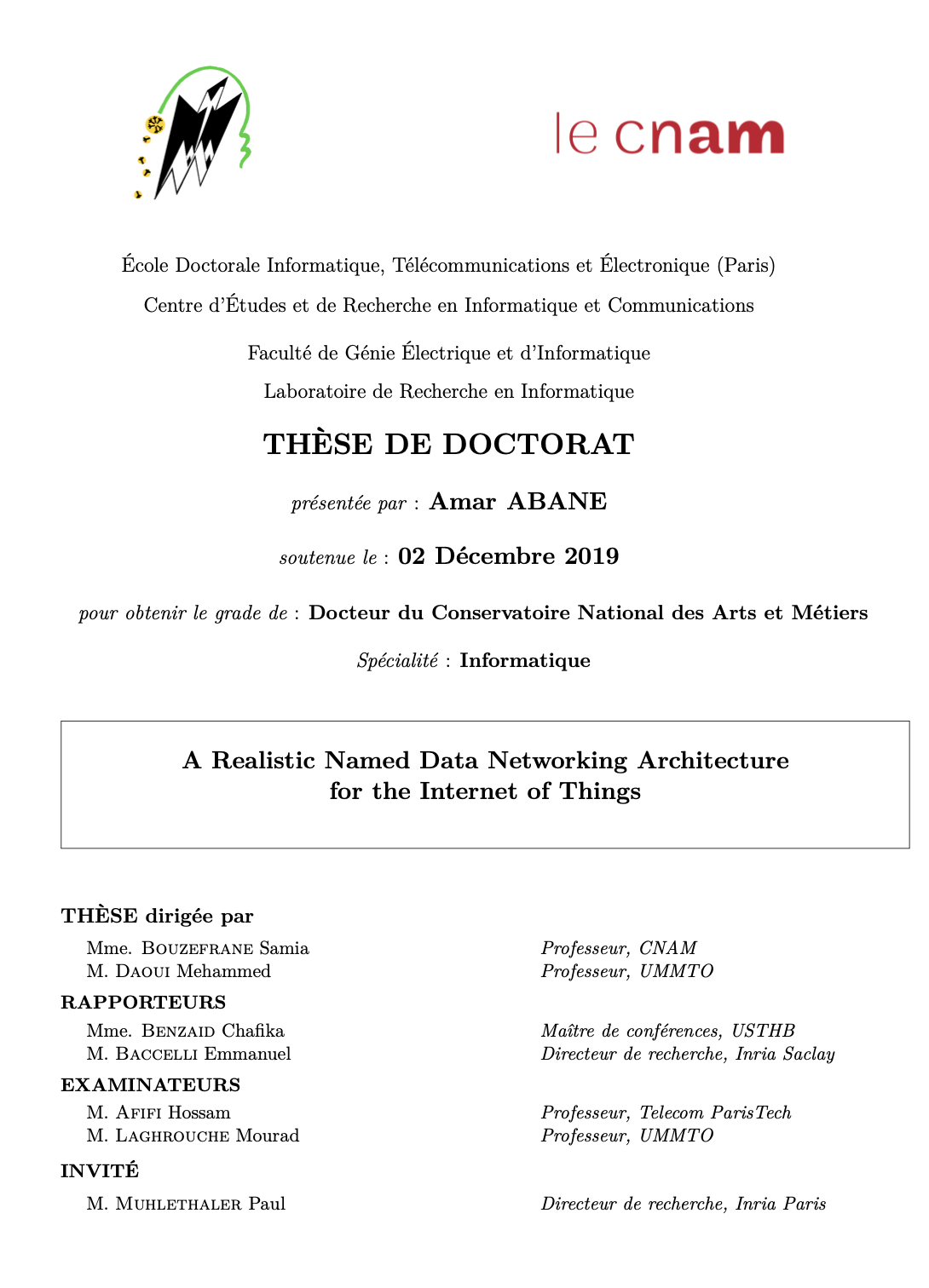Amar Abane, Ph.D. student in the ROC Team, will defend his Ph.D. thesis on December 2, 2019, at CNAM, 75003 Paris, France.
Thesis Title: A Realistic Named Data Networking Architecture for the Internet of Things
Thesis Title (French): Une Architecture NDN realiste pour l’Internet des Objets

Abstract:
The Internet of Things (IoT) uses the interconnection of billions of small computing devices, called “Things”, to provide access to services and information all over the world. This has been made possible by the democratization of smartphones and laptops, and more importantly by the affordability of resource-constrained data acquisition devices and corresponding wireless communication technologies. However, the IP protocol stack which IoT uses currently has been designed decades ago for a completely different purpose, and IoT features now highlight the limitations of IP. That said, IP can still support IoT systems through adaptations and middleware, namely CoAP, 6LoWPAN, RPL, REST and other solutions. However, the significant efforts expended in current IP solutions is just to make IoT devices support the existing IP protocol suite, whereas many other new features have to be included in devices.
While adapting IP for the IoT might be seen as cutting corners, alternative
architectures based on the Information Centric Networking (ICN) paradigm
promise to natively satisfy emerging Internet applications. One of these architectures is Named Data Networking (NDN). Our objectives through the work reported in this manuscript can be summarized in two aspects. The first objective is to show that NDN is suitable to support IoT networking. To achieve that, a detailed discussion on IP limits and NDN features is presented, followed by the design and deployment of a realistic NDN-IoT architecture that shows the simplicity of NDN. Moreover, a simulation framework for NDNIoT and a model for NDN wireless forwarding are proposed to quantify and analyse the advantages of NDN. The second objective is the design of two solutions for lightweight forwarding in constrained wireless networks. These two solutions consider the IEEE 802.15.4 technology and use only broadcast communications.
The first solution is based on a reinforcement learning scheme and operates at network layer, while the second is inspired of priority-based medium access and operates at link-layer.
Amar’s publications:
0 documents
Access Thesis: https://theses.fr/2019CNAM1255


